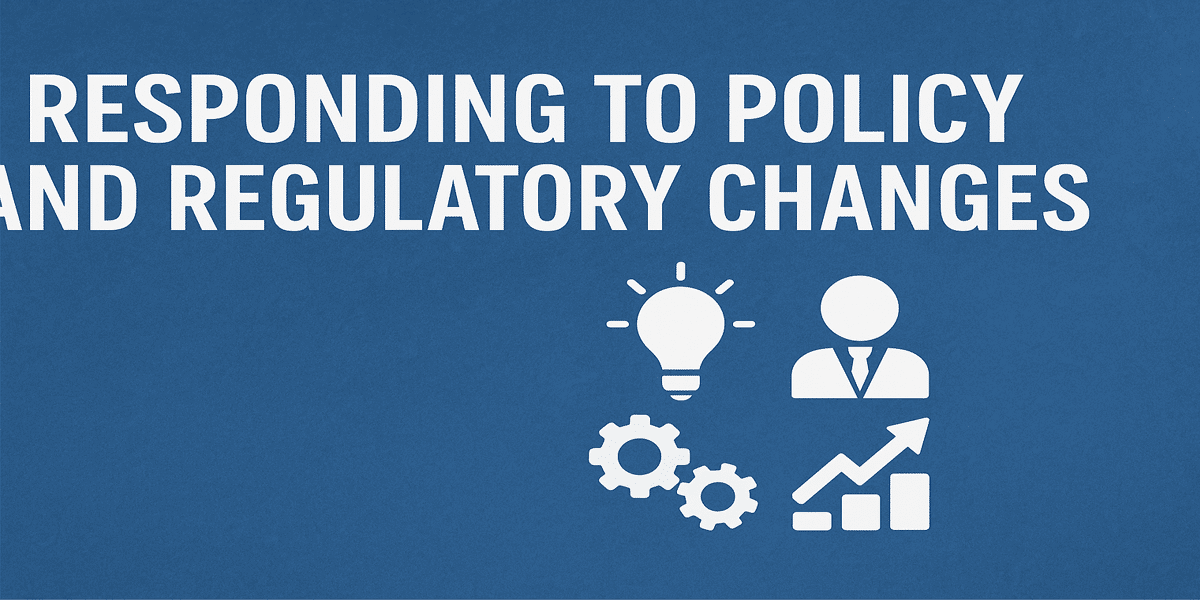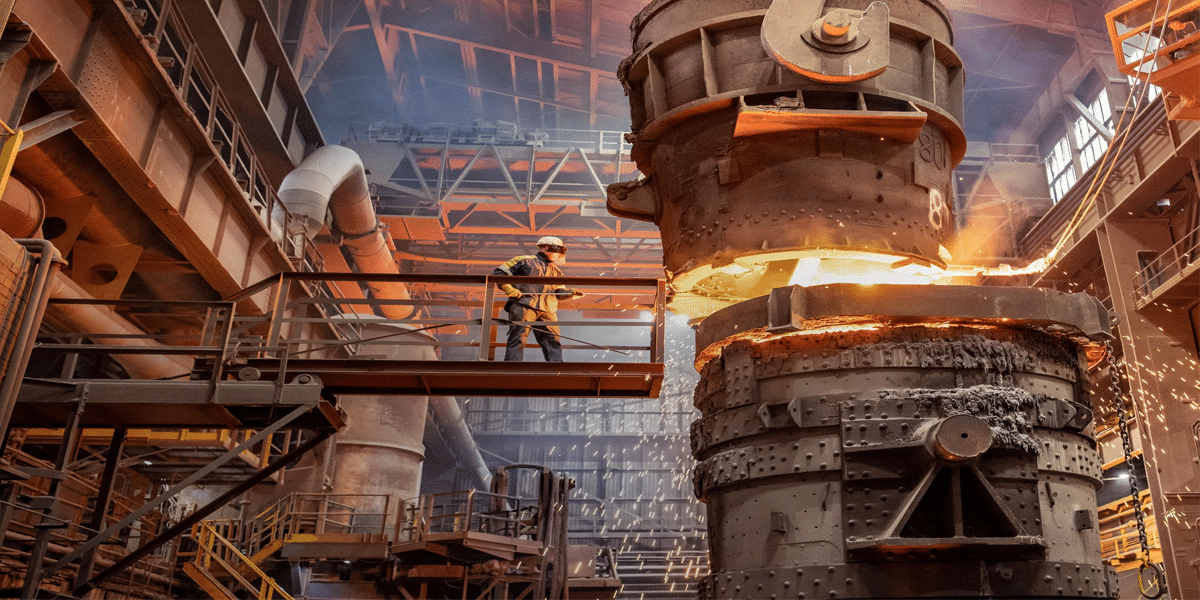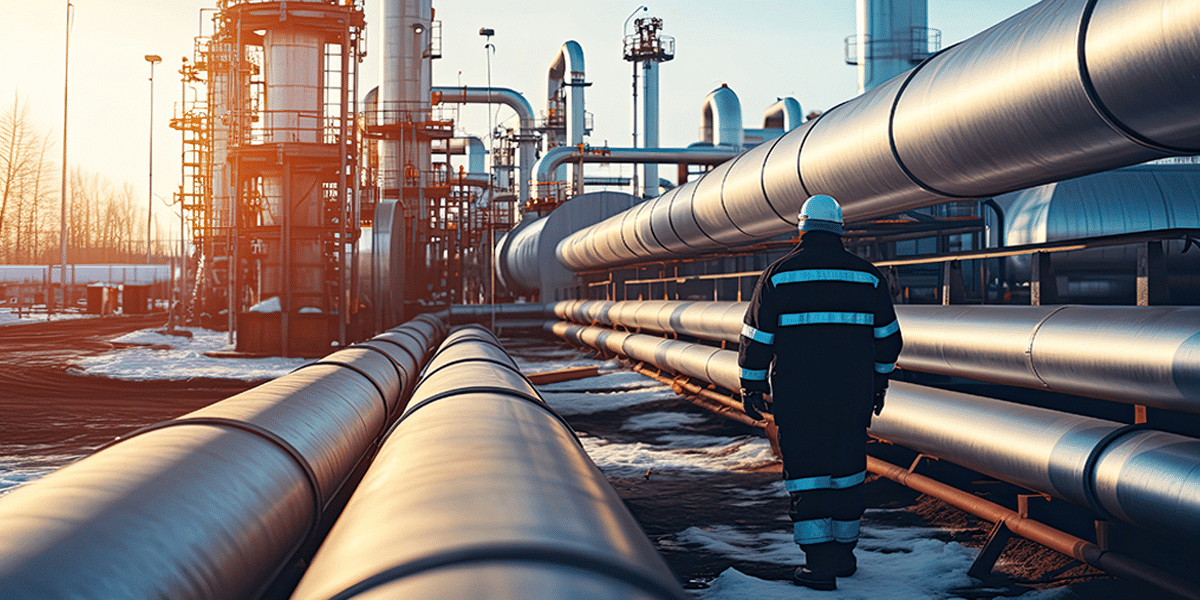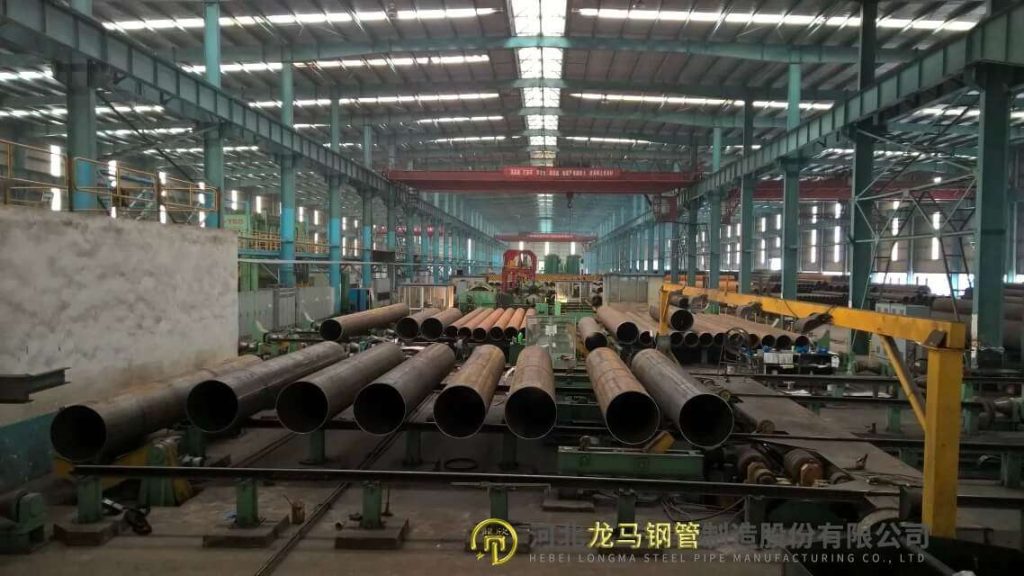- 1. Common Technical Standards for Steel Pipes Across Different Countries and Regions
- 2. Environmental and Safety Regulations in the Steel Pipe Industry
- 3. Compliance Policies in Import and Export Trade
- 4. The Regulatory Authorities and Policy Trends in the Steel Pipe Industry
- 5. How Companies Can Respond to Policy and Regulatory Changes?
As global manufacturing and infrastructure projects continue to expand, policies and regulations in the steel pipe industry are becoming increasingly complex. From evolving steel pipe standards to growing demands for steel pipe import-export compliance and environmental regulations, these factors are significantly shaping how companies operate and compete. Particularly in international markets, understanding the API standard steel pipe export guidelines and FBE coated steel pipe testing standards is essential for businesses aiming to stay competitive and compliant. This article explores key regulatory trends in the steel pipe sector, offering insights into export policy requirements, steel pipe environmental certification processes, and the strategic implications for manufacturers and exporters navigating today’s global landscape.

Common Technical Standards for Steel Pipes Across Different Countries and Regions
In global steel pipe trade, understanding the technical standards of different countries and regions is essential to ensure compliance and successful exports. These standards vary in terms of applications, performance requirements, and testing methods. Some international organizations have also issued widely recognized technical frameworks that serve as entry benchmarks for many export destinations.
1. International Standard Systems
ISO (International Organization for Standardization) ISO develops general-purpose international standards that are accepted globally. Common steel pipe standards include:
ISO 3183: Steel pipes for petroleum and natural gas industries
ISO 11960: Casing and tubing specifications
Meeting ISO standards not only enhances credibility but also facilitates access to multiple markets and smoothens the steel pipe environmental certification process.
2. Major National and Regional Standard Systems
United States: API and ASTM Standards
API 5L: Covers line pipe for oil and gas transportation, emphasizing strength and corrosion resistance. It is a core reference in the API standard steel pipe export guide.
ASTM A53 / A106: Widely used in structural and pressure-bearing applications.
Compliance with U.S. standards typically involves rigorous physical and chemical testing and is a key step for entering the North American market.
European Union: EN Standards
EN 10210 / EN 10219: Standards for welded or seamless structural hollow sections.
Exporters must also meet CE Marking requirements and relevant steel pipe environmental regulations before shipping.
China: GB and SY/T Industry Standards
GB/T 8163 / GB/T 9711: Applicable to fluid and oil & gas transmission.
SY/T 5037 / SY/T 0413: Focused on spiral welded pipes and FBE coated steel pipe testing standards, widely used in energy infrastructure projects.
Understanding Chinese standards is also essential for steel pipe import-export compliance, especially under the Belt and Road Initiative.
Japan: JIS Standards
JIS G3444: Carbon steel tubes for general structural purposes (e.g., scaffolding, bridges, construction).
Known for strict precision and testing requirements, JIS standards are critical for exporters targeting the Japanese market.
South Korea: KS Standards
KS D3562 / KS D3583: Covering structural and pressure pipes with emphasis on weldability and strength.
South Korea has high environmental standards, requiring alignment with local steel pipe environmental regulations and testing protocols.
Australia/New Zealand: AS/NZS Standards
AS/NZS 1163: Cold-formed structural steel hollow sections (ERW pipes).
Widely used in construction and municipal projects, requiring pre-export compliance and certification.
3. Other Widely Adopted Standards
DIN (German Industrial Standards)
Examples include DIN 2448 / DIN EN 10255, focusing on dimensional accuracy and strength classification.
DIN standards are important for exports to Europe or projects involving German-engineered systems.
Environmental and Safety Regulations in the Steel Pipe Industry
With the global push toward sustainable development and green trade, environmental and safety compliance has become a critical focus in steel pipe manufacturing and export. Whether it’s controlling emissions during production or obtaining the necessary environmental and safety certifications for target markets, non-compliance may lead to export barriers, project rejection, or even legal consequences.
1. Major Global Environmental Regulations and Standards
Europe: REACH and RoHS
REACH (Registration, Evaluation, Authorisation and Restriction of Chemicals) requires declaration of hazardous substances in steel pipes and restricts the use of heavy metals and coating chemicals.
RoHS (Restriction of Hazardous Substances) applies especially to structural pipes with electronic components, banning lead, cadmium, mercury, etc.
United States: EPA and OSHA
The Environmental Protection Agency (EPA) sets strict limits on industrial wastewater, dust, and coating compositions.
The Occupational Safety and Health Administration (OSHA) defines safety standards for production, protective equipment, and facility layout.
Note: FBE coated steel pipes exported to the U.S. must comply with low-VOC emission standards.
China: Green Manufacturing and “Dual Carbon” Policies
Enforcement of ultra-low emission retrofitting in the steel sector and carbon trading policies.
Promotion of low-VOC, corrosion-resistant green coatings.
Exporters must also be aware of steel pipe export policy requirements and environmental compliance inspections.
2. Certification Process and Compliance Requirements
The general environmental certification process includes:
Material safety testing (e.g., lead-free, mercury-free)
Coating and surface treatment conformity tests
Third-party inspection reports (SGS, TÜV, BV)
Submission of Declaration of Conformity (DoC), MSDS, and technical documentation
3. Common Compliance Risks
Coatings containing undeclared hazardous substances (e.g., BPA)
Excessive dust or gas emissions at the production site
Lack of required workplace safety measures (e.g., ventilation, dust extraction, protective covers)
These issues may severely hinder steel pipe import-export compliance and result in rejections at customs.

Compliance Policies in Import and Export Trade
In international trade, compliance policies are crucial to ensuring smooth transactions in global markets. In the steel pipe industry, compliance policies involve the legal requirements of both exporting and importing countries, international standards, product certifications, environmental protection, and more. Below is an overview of the key compliance policies required in steel pipe import and export trade.
1. Legal Framework for Import and Export Compliance
The legal framework for import and export compliance typically includes government regulations of both importing and exporting countries, international trade agreements, and the requirements of international standards. Businesses must understand and comply with these regulations to avoid legal violations or facing economic sanctions, fines, and penalties.
International Trade Agreements: These include rules under the World Trade Organization (WTO) and regional trade agreements, which govern the basic rules of trade, such as tariffs, quotas, anti-dumping, and countervailing measures.
Export Controls and Prohibitions: Some countries impose export controls on certain products. Steel pipes, especially those used for military purposes, may be restricted from export. Businesses must ensure their products comply with the policies and laws of the destination country.
2. Product Compliance Requirements
Different countries have specific technical and quality requirements for steel pipe products. Ensuring that products meet these requirements is the core of compliance during import and export processes.
Steel Pipe Industry Standards: Standards such as API standard steel pipe export guidelines, ISO, ASTM, etc., ensure that the dimensions, wall thickness, material, and other specifications of steel pipes meet international requirements, guaranteeing product quality.
Quality Certifications and Testing: Some markets require steel pipes to undergo certifications and testing to meet specific safety, environmental, and technical standards. For instance, steel pipes exported to the EU need CE certification, while products exported to the US must comply with UL certification.
3. Environmental Regulations and Certifications
As global environmental standards become stricter, environmental compliance has become an integral part of the steel pipe import and export process.
Environmental Requirements: For example, FBE-coated steel pipe testing standards require steel pipes to meet low-VOC emission standards and avoid the use of harmful substances. Some countries, such as those in Europe and the US, require steel pipe products to meet specific environmental regulations, like REACH and RoHS.
Environmental Certification Process: Before export, steel pipe products need to provide environmental certification documents, including third-party test reports and environmental declarations. Businesses must adhere to the relevant environmental certification process to ensure products meet the target market’s environmental standards.
4. Export Policies and Tariffs
Export policies, tariffs, and trade barriers in different countries significantly affect the international trade of steel pipes. Understanding the export policies of various countries is key to ensuring smooth import and export trade.
Tariff Policies: In some countries, the import tariffs for steel pipes can be quite high, so businesses need to plan their tariff budgets and price strategies carefully.
Export Incentives: Some countries provide tax breaks, subsidies, and other incentives for export enterprises. Businesses can leverage these policies to reduce costs and enhance their competitiveness.
5. International Trade Compliance Documentation
Import and export transactions require submitting a series of compliance documents to ensure that each trade activity meets the legal requirements of the destination country.
Trade Contracts and Terms: The import-export contract must clearly specify payment terms, delivery terms, insurance clauses, etc., to avoid disputes due to unclear contract terms.
Compliance Declarations and Certificates: Businesses need to provide compliance declarations, product certification, certificates of origin, and other documents to ensure products can smoothly enter the target market.
The Regulatory Authorities and Policy Trends in the Steel Pipe Industry
The regulatory authorities and policy trends in the steel pipe industry play a crucial role in shaping the development direction and market rules. With the evolving global trade environment, especially the increasing environmental requirements and technical standards, the steel pipe industry faces an increasingly complex policy environment. Below is an overview of the key regulatory authorities and the current policy trends in the steel pipe industry.
1. Regulatory Authoritiesin the Steel Pipe Industry
1. National and Regional Regulatory Authorities
Steel pipe industry regulatory authorities generally include national and regional government agencies responsible for setting and enforcing industry standards, inspections, certifications, and environmental regulations.
General Administration of Quality Supervision, Inspection and Quarantine (AQSIQ) – China: Responsible for quality supervision, inspection, and certification of steel pipe products. AQSIQ has established the “Steel Pipe Product Quality Management Specifications” and “Steel Pipe Product Quality Standards,” ensuring that domestic steel pipes comply with national standards.
American Society for Testing and Materials (ASTM): ASTM is a key international standard-setting authority for the steel pipe industry, formulating influential standards such as API, ASTM A53, ASTM A252, etc.
European Committee for Standardization (CEN): Responsible for the steel pipe product standards in the European market, such as EN 10217, EN 10219, etc.
International Organization for Standardization (ISO): ISO provides global technical standards for the steel pipe industry, covering material, manufacturing methods, and performance testing.
2. Environmental and Safety Regulatory Authorities
With the growing global focus on environmental protection, regulatory authorities for environmental and safety standards have had an increasing impact on steel pipe production enterprises.
Environmental Protection Agency (EPA) – USA: The EPA regulates environmental compliance for steel pipe production companies in the US. These businesses must adhere to laws such as the Clean Air Act (CAA), Clean Water Act (CWA), and other environmental regulations.
Ministry of Ecology and Environment – China: China’s environmental policies are becoming stricter, requiring steel pipe companies to comply with emission standards, wastewater treatment requirements, and waste recycling regulations.
3. Export and Trade Regulatory Authorities
Steel pipe import and export trade is regulated by various countries and regions, with these regulatory authorities setting product certifications, trade compliance, and tariff policies.
General Administration of Customs – China: Responsible for customs clearance and trade compliance checks for steel pipe exports, ensuring products meet the relevant standards for export.
United States International Trade Commission (ITC): Responsible for investigating anti-dumping cases and imposing tariffs on steel pipe imports to protect the domestic industry.
European Commission (EC): Investigates anti-dumping measures and subsidy issues on imported steel pipe products to ensure fair competition in the market.
2. Policy Trends in the Steel Pipe Industry
1. Stricter Environmental Regulations
With the growing pressure for global environmental protection, environmental regulations in the steel pipe industry are becoming stricter. Steel pipe production involves significant energy consumption, and emissions of waste gases and wastewater are a major environmental concern.
Low Emission Requirements: Many countries require steel pipe producers to adopt low-carbon and low-emission manufacturing processes to reduce carbon dioxide and harmful gas emissions.
Green Certification Requirements: Environmental certification processes are gaining importance. Steel pipe companies must obtain certifications, such as ISO 14001 environmental management system certification, to remain competitive in the market.
2. Standardization of International Standards
The process of standardizing international steel pipe production and trade is accelerating, with standards across different countries and regions becoming more unified, which helps enhance the global competitiveness and sustainable development of the steel pipe industry.
Convergence of Standards: Global standard-setting authorities such as ISO and ASTM are pushing for the convergence of steel pipe production standards across countries, enabling businesses to meet international market demands more easily.
Unified Certification Requirements: Certification systems across countries are becoming more aligned, requiring steel pipe exports to comply with globally recognized standards to enter international markets smoothly.
3. Intelligent Manufacturing and Technological Innovation
As technology progresses, intelligent manufacturing is becoming a key trend in the steel pipe industry. Through digital technologies and intelligent production, steel pipe companies can improve efficiency, reduce energy consumption, and minimize material waste.
Smart Manufacturing: Steel pipe companies are increasingly adopting smart production equipment, automated production lines, real-time monitoring, and data analysis technologies to improve product quality and consistency.
Energy-saving and Emission-reduction Technologies: Companies are focusing on the application of energy-saving and emission-reduction technologies in their production processes to meet increasingly stringent environmental regulations and reduce operating costs.
4. Trade Protectionism and Market Access Policies
With changes in global trade dynamics, more countries are implementing import restrictions and trade protectionist policies, such as anti-dumping measures, quotas, and higher tariffs.
Anti-dumping and Anti-subsidy Measures: Countries are intensifying investigations into steel pipe imports for anti-dumping practices, especially with the Chinese steel pipe exports facing various trade barriers. Steel pipe companies need to pay attention to trade policies and market access requirements in target countries.
Market Access Policies: Countries set market access requirements for steel pipe products based on domestic industry protection needs, including quality inspections, certifications, and environmental standards.

How Companies Can Respond to Policy and Regulatory Changes?
How companies respond to policy and regulatory changes is crucial for ensuring long-term stability and development in the market. As the global policy environment continues to evolve, businesses face increasing legal compliance pressures, especially in areas such as environmental protection, import/export trade, and industry standards. Effectively responding to these changes can not only ensure that companies avoid compliance risks but also help them gain a competitive edge. Here are some strategies companies can use to respond to policy and regulatory changes:
1. Timely Monitoring of Policy and Regulatory Changes
Companies need to establish effective information monitoring systems to regularly track and analyze policy and regulatory changes, including national and regional laws, industry standards, environmental requirements, etc. This can be achieved through the following methods:
Join Industry Associations: Industry associations often provide regular updates on regulatory changes and offer compliance guidance.
Government Publication Channels: Companies should regularly check government websites, press releases, and announcements from regulatory agencies to stay informed about regulatory changes.
Professional Consulting Services: Businesses can hire legal advisors or compliance experts to ensure that their interpretation of regulations and compliance measures align with the latest requirements.
2. Strengthen Internal Compliance Management
To respond to policy and regulatory changes, companies should enhance their internal compliance management systems. This includes:
Compliance Department or Position: Establishing a dedicated compliance department or position responsible for tracking and implementing regulations, working with other departments to ensure all business processes comply with the latest policies.
Employee Training and Education: Regularly providing training for employees on relevant regulations to raise compliance awareness and ensure that all operations adhere to the latest legal requirements.
Compliance Inspections and Audits: Conducting regular compliance checks and internal audits to ensure all production, sales, import/export, and other activities meet relevant policies.
3. Flexibly Adjust Business Strategy
Changes in policies and regulations may impact a company’s operating model and strategic planning. Therefore, businesses need to flexibly adjust their business strategies to adapt to new market rules:
Product Adjustments: In response to changes in environmental regulations or safety requirements, businesses may need to adjust manufacturing processes, product designs, and material usage. For example, if certain materials or processes no longer meet new environmental standards, businesses should make timely improvements or substitutions.
Market Positioning and Business Layout: When import/export policies change, companies need to adjust their market positioning and business layout, seeking new export markets or adapting to localized policy requirements.
Technological Innovation and Investment: To meet environmental regulations, businesses should increase investment in technological innovation, improving resource utilization, reducing waste emissions, and ensuring their products meet environmental certification requirements.
4. Enhance Communication with Government and Industry Organizations
Proactive communication with government agencies and industry regulatory authorities helps businesses gain timely information about policy changes and participate in the formulation of related policies.
Policy Consultation: By consulting with government departments on specific policy changes, companies can understand compliance requirements and seek support during policy adjustments.
Industry Collaboration: Companies can collaborate with peers in the industry or industry associations to promote the establishment of compliance standards within the industry, ensuring that regulations are reasonable and aligned with industry realities.
In conclusion, as policies and regulations continue to evolve, businesses must remain flexible and proactive in managing compliance, technological innovation, and strategic adjustments. By establishing a robust internal compliance system, staying updated on policy changes, and maintaining close communication with government agencies and industry associations, companies can effectively navigate the challenges posed by regulatory changes and ensure long-term stability. At the same time, with the increasing interconnectedness of global markets, international regulatory changes cannot be overlooked. Companies must prepare in advance, adjust their strategies and product directions in a timely manner, and stand out in a complex regulatory environment to gain a competitive edge. Only businesses with sharp insight and adaptability can thrive in the fierce competition and achieve sustainable development!



